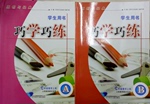题目内容
_________to nuclear radiation, even for a short time, may produce variants of genes in human bodies.
A. Being close B. Having been closed
C. Closed D. After being closed
练习册系列答案
 巧学巧练系列答案
巧学巧练系列答案 课课练江苏系列答案
课课练江苏系列答案
相关题目
题目内容
_________to nuclear radiation, even for a short time, may produce variants of genes in human bodies.
A. Being close B. Having been closed
C. Closed D. After being closed
 巧学巧练系列答案
巧学巧练系列答案 课课练江苏系列答案
课课练江苏系列答案